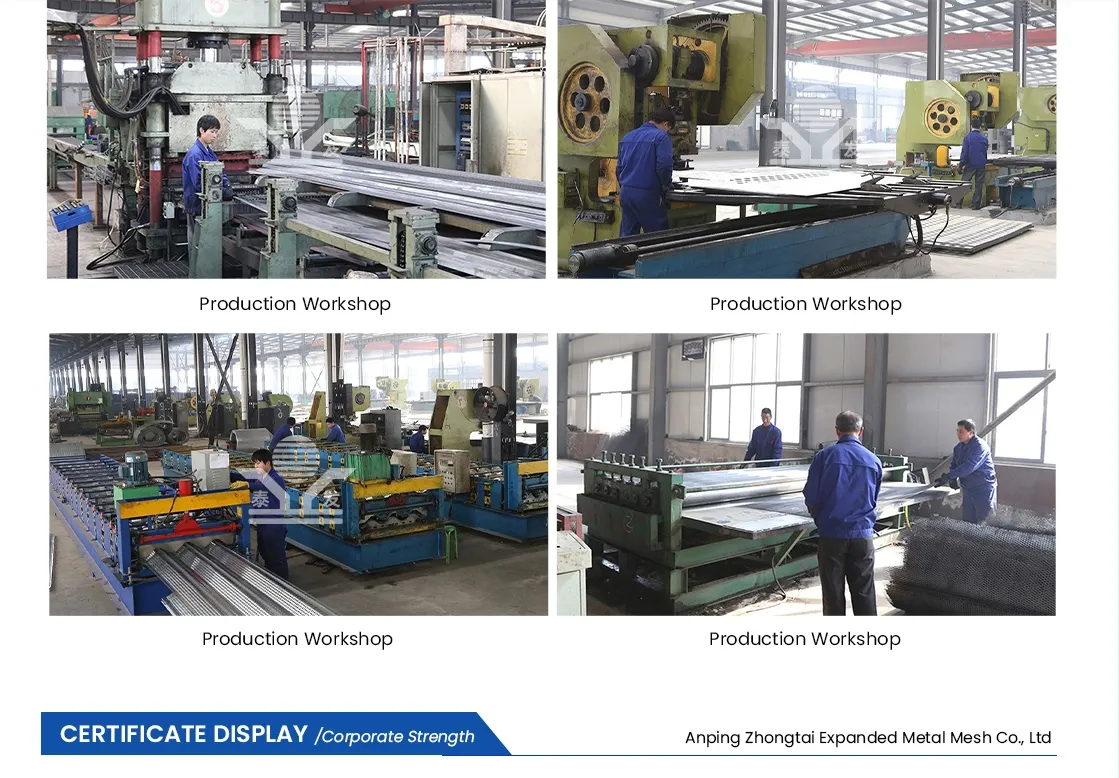The Versatility of Hexagonal Perforated Metal
Hexagonal perforated metal is gaining popularity across various industries due to its unique design and practical applications. The hexagonal pattern, with its six-sided shape, offers distinct advantages in terms of aesthetics, functionality, and structural integrity. This article will delve into the characteristics, benefits, and diverse applications of hexagonal perforated metal.
Characteristics of Hexagonal Perforated Metal
Hexagonal perforated metal panels are made by perforating a sheet of metal, usually aluminum, steel, or stainless steel, to create a series of hexagonal holes. This perforation process can be customized in terms of hole size, thickness, and spacing, allowing for tailored designs that meet specific requirements. The materials used are often durable and corrosion-resistant, making them suitable for both indoor and outdoor applications.
One of the most notable features of hexagonal perforated metal is its ability to maintain strength while reducing weight. The hexagonal shape provides enhanced load distribution, which minimizes bending or deformation even under significant pressure. This characteristic makes it an ideal choice for applications where structural integrity is paramount.
Aesthetic Appeal
Beyond its functionality, hexagonal perforated metal offers an appealing aesthetic that can enhance architectural designs. The geometric pattern adds a modern touch to a variety of spaces, making it a popular choice in contemporary architecture. It can be used in facades, ceilings, and partitions, providing visual interest while maintaining an open feel due to the perforations.
Many designers utilize the versatility of hexagonal perforated metal to create striking visual effects. When light passes through the hexagonal openings, it casts intricate shadows and patterns, which can dramatically alter the ambiance of a space. This quality is especially appealing in urban environments, where building facades are often crafted to be eye-catching and unique.
Functional Versatility
hexagonal perforated metal

Hexagonal perforated metal is incredibly versatile and can be used in numerous applications across different sectors. Some common uses include
1. Architectural Applications As mentioned earlier, hexagonal perforated metal is often employed in building facades, canopies, and interior partitions. The combination of durability and aesthetic appeal makes it ideal for creating stunning architectural features.
2. Industrial Uses In industrial settings, hexagonal perforated metal serves various purposes, including filtration, ventilation, and safety barriers. Its robust nature ensures it can withstand harsh conditions while providing essential functionalities, such as allowing airflow or filtering out debris.
3. Furniture Design Designers increasingly incorporate hexagonal perforated metal into furniture pieces, including tables, chairs, and shelves. The material's lightweight nature, coupled with its strength, allows for innovative and modern designs that can fulfill both functional and decorative purposes.
4. Sound Control In spaces where acoustics are a concern, hexagonal perforated metal is used to create sound-dampening solutions. The perforations help absorb sound energy, making it useful for theaters, concert halls, and open office spaces, where noise reduction is essential for comfort and productivity.
5. Agriculture In modern farming, hexagonal perforated metal gardens can be used for erosion control, supporting plant growth by providing structure while allowing water to flow freely. This can be particularly beneficial in reducing water waste and enhancing crop yields.
Conclusion
In summary, hexagonal perforated metal is a highly functional and visually appealing material that serves a variety of industries. Its unique hexagonal design offers structural benefits while enhancing aesthetic appeal, making it a favored choice for architects, designers, and engineers alike. As industries continue to explore innovative applications for hexagonal perforated metal, its versatility and durability will undoubtedly solidify its place as a valuable resource in modern construction and design. Whether in architectural features, industrial applications, or furniture design, the potential of hexagonal perforated metal is limited only by the imagination.
-
Turn Down the Noise: The Future of Highway Sound Barriers
NewsApr.09,2025
-
Silence the Sound: The Power of Highway Noise Barriers
NewsApr.09,2025
-
Reduce Road Noise Effectively with Highway Noise Barriers
NewsApr.09,2025
-
Noise-Free Living: How Highway Barriers Make a Difference
NewsApr.09,2025
-
Engineered for Silence: Highway Noise Barriers for Every Road
NewsApr.09,2025
-
Effective Noise Control: Highway Barriers for a Quieter Tomorrow
NewsApr.09,2025
Subscribe now!
Stay up to date with the latest on Fry Steeland industry news.

